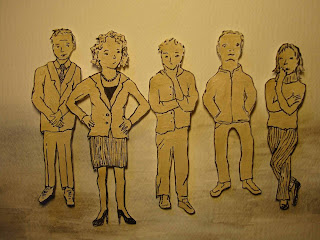It’s natural that your response to complaints like these
will reflect the tone in which they were written. Angry letters, after all, get angry
responses. When you’re responding to
complaints, however, your professionalism hangs on whether you can overlook the
anger and emotion customers have shoved in your face and focus on the issues
and the solutions. After all, the people
you’re dealing with are probably very nice face to face. The anonymity of telephone calls and letters,
however, allows them to vent their frustration with impunity.
Remember, although you needn’t agree with your customer’s
point of view, responding to a complaint successfully means that you do need to
understand their situation and their feelings.
In this way, regardless of whether the customer’s expectations or
demands for a solution were completely met, you can still go a long way towards
soothing their anger and disappointment.
All communications with complaining customers, therefore, must
be expressed in an understanding tone, whether you are speaking with them on
the telephone or writing to them in a response letter. That’s why now is a good time to read through
the dusty old response formats your company has been sending to complaining
customers for ages and see if the language you’re using to express your empathy
is current, new- millennium, business English.
Once you have responded to a customer’s complaint, take
ownership of it and follow through to the end.
If you ensure that your company does the right thing by your customer
and then call to check that the issue has been resolved to their satisfaction,
you will consolidate your relationship and keep this customer for life.
Complaining customers aren’t really trying to spoil your
day. They just need to be
understood. If you can genuinely
empathize with their problems and provide what they need, they may become more
loyal than they were before complaining.
















































